A Peep into the Past
The roots of that present lay in the past and so I made voyages of discovery into the past, ever seeking a clue in it, if any such existed, to the understanding of the present.
Each major culture and civilisation has certain distinctive features. rooted in the past, which bear the impress of that culture. India, with thousands of years of history, bears even now the powerful impress of her own distinctive features. They are today covered up by widespread and appalling poverty, the result of a traditional society and a static economy in the past, petrified to some extent by colonial rule. But these essential features, though apparently associ ated with the traditional structure of society are in no sense an integral part of it.
These values are a part of India’s thinking, even as, more and more, that thinking is directed to the impact of the scientific and technological civilisation of the modern world. To some extent, the problem of India is how to bring about a synthesis between these two. Probably, no other country in the modern world would have produced a Gandhi; even Tagore, who was typically modern in his approach to life’s problems, was, at the same time, steeped in India’s old culture and thinking. His message is thus one of synthesis between these two.
I visited old monuments and ruins and ancient sculptures and frescoes-Ajanta, Ellora. the Elephanta Caves, and other places and also saw the lovely buildings of a later age in Agra and Delhi, where every stone told its story of India’s past.
I was excited partly because of a certain pride in our nation’s past. Apart from that there was a sense of disclosure, letting me have a peep into the past and filling in a large number of vacant spaces in history.
Between the Indus Valley Civilization and today in India there are many gaps and periods about which we know little. The links joining one period to another are not always evident, and a very great deal has of course happened and innumerable changes have taken place. But there is always an underlying sense of continuity. of an unbroken chain which joins modern India to the far distant period of six or seven thousand years ago when the Indus Valley Civilization probably began. It is surprising how much there is in Mohenjo-daro and Harappa which reminds one of persisting tradi tions and habits-popular ritual, craftsmanship, even some fashion in dress. Much of this influenced Western Asia.
There is a stillness and everlastingness about the past; it changes not and has a touch of eternity, like a painted picture or a statue in bronze or marble. Unaffected by the storms and upheavals of the present, it maintains its dignity and repose and tempts the troubled spirit and the tortured mind to seek shelter in its vaulted catacombs. There is peace there and security, and one may even sense a spiritual quality.
But it is not life, unless we can find the vital links between it and the present with all its conflicts and problems. It is a kind of art for art’s sake, without the passion and the urge to action which are the very stuff of life.
Yet the past is ever with us and all that we are and that we have comes from the past. We are its products and we live immersed in it. Not to understand it and feel it as something living within us is to understand the present. To combine it with the present and extend it to the future, to break from it where it cannot be so united, to make of all this the pulsating and vibrating material for thought and action that is life.
The burden of the past, the burden of both good and ill. is overpowering, and sometimes suffocating, more especially for those of us who belong to very ancient civilizations like those of India and China. As Nietzsche says: ‘Not only the wisdom of centuries-also their madness breaketh out in us. Dangerous is it to be an heir.
Aurobindo Ghose writes somewhere of the present as the pure and t virgin moment, that razor’s edge of time and existence which divides the past from the future, and is, and yet, instantaneously is not. The phrase is attractive and yet what does it mean? The virgin moment emerging from the veil of the future in all its naked purity, coming into contact with us, and immediately becoming the soiled and stale past. Is it we who soil it and violate it? Or is the moment not so virgin after all, for it is bound up with all the harlotry of the past?
History today has ceased to be the history of this country or that. It has become the history of mankind because we are all tied up together in a common fate.
While learning from other countries, we should also remember that cach country is conditioned by its past. All the factors that have conditioned India have to be remembered.
Inheritance (Plus & Minus)
What is my inheritance? To what am I an heir? To all that humanity has achieved during tens of thousands of years, to all that it has thought and felt and suffered and taken pleasure in, to its cries of triumph and its bitter agony of defeat, to that astonishing adventure of man which began so long ago and yet continues and beckons to us. To all this and more, in common with all men. But there is a special heritage for the people of India-not an exclusive one, for none is exclusive and all are common to the race of man-one more especially applicable to us, something that is in our flesh and blood and bones, that has gone to make us what we are. and what we are likely to be.
What is India? That is a question which has come back again rind again to my mind, and in my own amateurish way I sought a reply to it in her past and in the present. The early beginnings of our history filled me with wonder. It was the past of a virile and vigorous race with a questing spirit, an urge for free inquiry and, even in its earliest known period, giving evidence of a mature and tolerant civilization. Accepting life and its joys and burdens, it was ever searching for the ultimate and the universal.
Some kind of a dream of unity has occupied the mind of India since the dawn of civilization. That unity was not conceived as something imposed from outside, a standardization of externals or even of beliefs. It was something deeper and, within its fold, the widest tolerance of belief and custom was practised and every variety acknowledged and even encouraged.
It is interesting to note that at this dawn of India’s story, she does not appear as a puling infant, but already grown up in many ways. She is not oblivious of life’s ways, lost in dreams of a vague and unrealizable supernatural world, but has made considerable techni cal progress in the arts and amenities of life, creating not only things of beauty, but also the utilitarian and more typical emblems. of modern civilization-good baths and drainage systems.
There was something living and dynamic about this heritage which showed itself in ways of living and a philosophical attitude to life and its problems.
But let us not become conceited, for if we are the heirs of the ages, we are the heirs of both the good and the bad. And there is a great deal of evil in our present inheritance in India. a great deal that has kept us down in the world, and reduced our noble country to great poverty, and made her a plaything in the hands of others. But have we not decided that this must no longer continue?
India must break with much of her past and not allow it to dominate the present. Our lives are encumbered with the dead wood of this past; all that is dead and has served its purpose has to go. But that does not mean a break with, or a forgetting of. the vital and life-giving in the past. We can never forget the ideals that have moved our race, the dreams of the Indian people through the ages, the wisdom of the ancients, the buoyant energy and love of life and nature of our forefathers, their spirit of curiosity and mental adventure, the daring of their thought, the splendid achievements in literature, art and culture, their love of truth and beauty and freedom, the basic values that they set up, their understanding of life’s mysterious ways, their toleration of ways: other than theirs, their capacity to absorb other peoples and their cultural accomplish ments, to synthesize them and develop a varied and mixed culture; nor can we forget the myriad experiences which have built up our ancient race and lie embedded in our subconscious minds. We will never forget them or cease to take pride in that noble heritage of ours. If India forgets them she will no longer remain India and much that has made her our joy and pride will cease to be.
Who was this Bharat Mata, Mother India, whose victory they wanted?. it was the dharti, the good earth of India, that they meant. What earth? Their particular village path, or all the patches in the district or province, or in the whole of India? And so question and answer went on, till they would ask me impatiently to tell them all about it. I would endeavour to do so and explain that India was all this that they had thought, but it was much more. The mountains and the rivers of India, and the forests and the broad fields, which gave us food, were all dear to us, but what counted ultimately were the people of India, people like them and me, who were spread out all over this vast land. Bharat Mata, Mother India, was essentially these millions of people, and victory to her meant victory to these people.
When I think of India, I think of many things: of broad fields dotted with innumerable small villages, of towns and cities have visited; of the magic of the rainy season which pours life in to the dry parched-up land and converts it suddenly into a glistening expanse of beauty and greenery, of great rivers and flowing water; of the Khyber Pass in all its bleak surroundings; of the southern tip of India; of people, individually and in the mass; and, above all, of the Himalayas, snow-capped, or some mountain valley in Kashmir in the spring, covered with new flowers, and with a brook bubbling and gurgling through it. We make and preserve the pictures of our choice, and so I have chosen this mountain background rather than the more normal picture of a hot, sub-tropical country.
The story of the Ganges, from her source to the sea from old times to new, is the story of India’s civilization and culture, of the rise and fall of empires, of great and proud cities, of the adventure of man and the quest of the mind which has so occupied India’s thinkers, of the richness and fulfilment of life as well as its denial and renunciation, of ups and downs, of growth and decay, of life and death.
Ajanta takes one back into some distant dream-like and yet very real world.
While the rest of the world progressed in many ways, we remained Narcissus-like, looking at our own beauty of countenance, our culture and so on, which no doubt had much beauty in them. But even beauty grows old and stagnates. The moment you, as an individual or as a nation, think that you are wise enough and do not want to learn any further, you are doomed. You stop growing. That was what happened to India, China and the whole of Asia and we suffered from it.
Nothing is more advantageous and more creditable than a rich heritage; but nothing is more dangerous for a nation than to sit back and live on that heritage. A nation cannot progress if it merely imitates its ancestors: what builds a nation is creative, inventive and vital activity. I seek the creative mind.
At any rate I know India somewhat and I think that the process of change in India can be peaceful and continuous; provided it is not too slow. That is, there is always a kind of a conflict. There are two forces at work: the urge to change, and the other, rather conserva tive, the urge to continuity. Both are always at work in every country. A complete break means break with the past, with your past culture, with everything. Well, essentially, a country does not do that. Even after a revolution it comes back to its past. If, however, the process of change is stopped, if there is too much static continuity, then there is a tendency to break. So, it is the question of balancing the two forces.
Life Through Action
This urge to action, this desire to experience life through action, has influenced all my thought and activity. Even sustained thinking, apart from being itself a kind of action, becomes part of the action to come. It is not something entirely abstract, in the void, unrelated to action and life. The past becomes something that leads up to the present, the moment of action, the future something that flows from it; and all three are inextricably intertwined and interrelated.
I never studied history in the formal way but informally. I have been greatly interested in history, chiefly because of my seeking to understand the past rather in terms of the present and even of the future to come. I have approached it as an exciting story. I have approached it as a developing drama, leading up to the present and making me wonder where it will lead to in the future. I never got into the habit of trying to learn the names of kings, dates, etc. And I confess I am singularly ignorant of names and dates except those I could not help picking up.
The whole course of history has fascinated me. Being an Indian, facts relating to the past of India interested me more. Being an Asian, facts relating to Asia also interested me more. But on the whole what has interested me really is the story of man developing himself wherever he might be. It is from that point of view I have tried to co-ordinate such little knowledge of history as I possess.
A nation cannot progress if it merely imitates its ancestors: what builds a nation is creative, inventive and vital activity.
The past oppresses me or fills me sometimes with its warmth when it touches on the present, and becomes, as it were, an aspect of that living present.
It would seem that every outside element that has come to India and been absorbed by India, has given something to India and taken much from her; it has contributed to its own and to India’s strength. But where it has kept apart, or been unable to become a sharer and participant in India’s life, and her rich and diverse culture, it has had no lasting influence, and has ultimately faded. away, sometimes injuring itself and India in the process.
The diversity of India is tremendous: it is obvious; it lies on the surface and anybody can see it. It concerns itself with physical appearances as well as with certain mental habits and traits.
Take India. I believe that there has been a n a marked change in the psychology of our people. I am not talking about all people. At the present moment I attach more importance in India to what we call our community projects than even to our major industrial or river valley schemes which are very big and impressive.
There is a change and a new vitality is coming into our people. Of course, I would say that that process started with our political revolution: by Mr. Gandhi’s movement. It shook up these people. It gave them the urge to advance and also it gave them some idea of how they could do it by working together, by co-operating and so forth. Now, how far can we take advantage of that and encourage it by further co-operative methods to improve their lot? How far can we create the conviction that it is not the Government that is doing. it for them the Government does it, of course-but that the people themselves join in and realize that they are partners in a big enterprise which will raise their level?… I think you can produce that.
On the other hand, it may be that the shock of a big revolutionary change has the advantage of a clean slate to write upon-in a sense but that revolution also brings about a great deal of destruction, a great deal of inner conflict.
When you talk about legislative changes in a democracy, you necessarily take into consideration the fact that the people have been brought up to the required level; or, if. not quite to the required level, then, at least, somewhere near to it. That is to say. if their representatives accept a measure in Parliament, then a very large section of the people must also accept it-or, at any rate, actively or passively, be ready to accept it.
There are always limitations on any action one wishes to take. There are degrees of compromises between the urge for the action and between the popular acceptance of it. The compromise in itself is not necessarily bad-provided that it goes in the right direction. That is: we may not achieve something immediately but we are going in that direction.


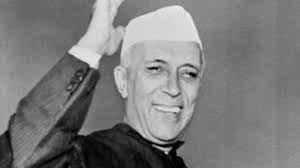
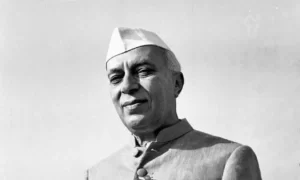
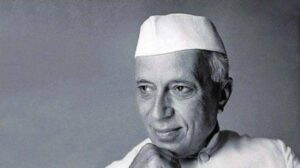

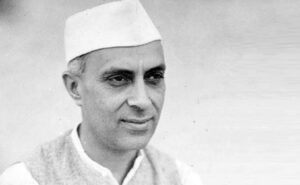
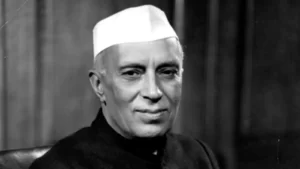

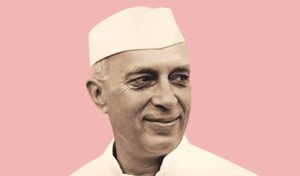

One Response